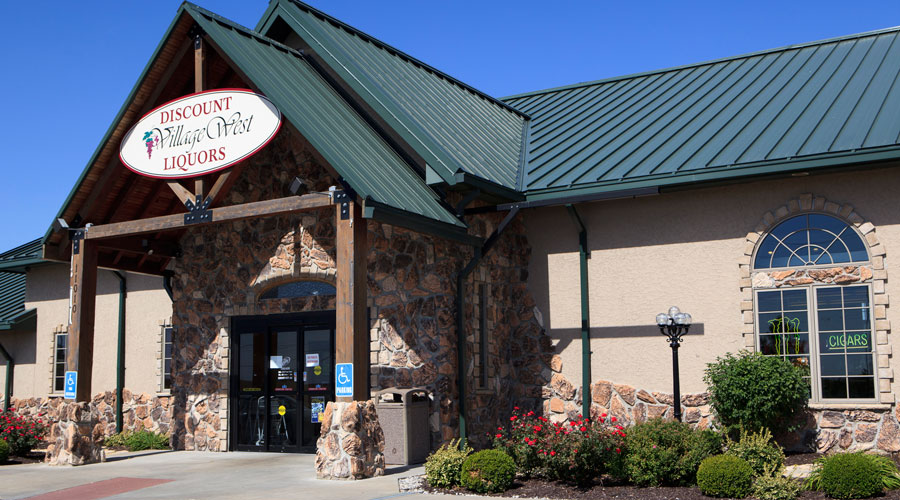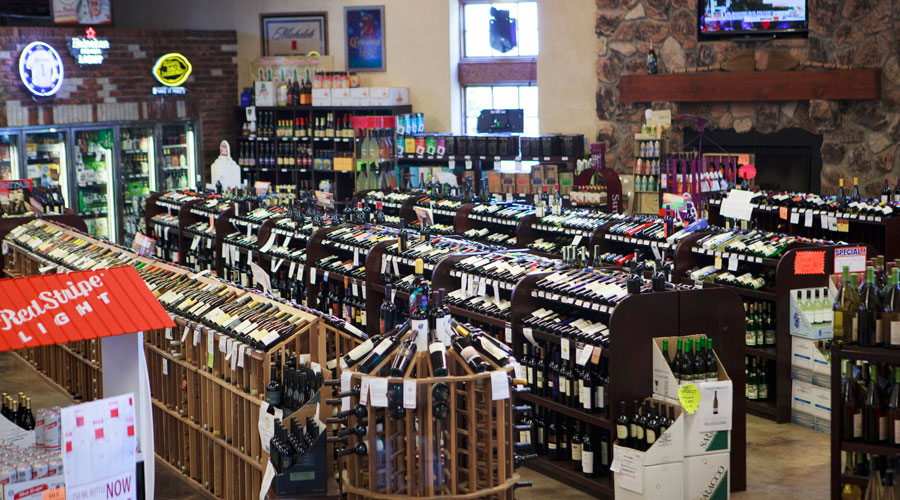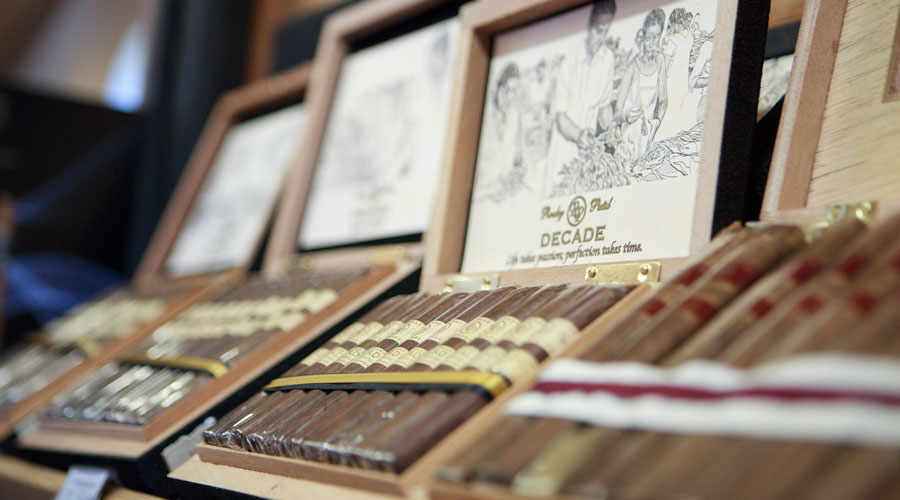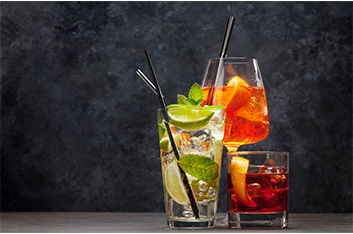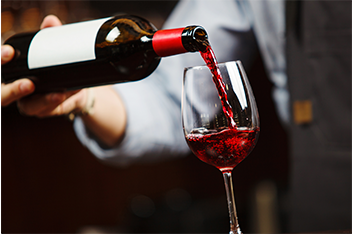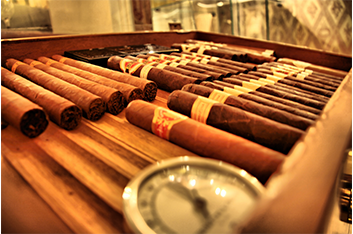Cigar 101
At VWDL we feature a walk-in cigar humidor located in the party shop that is filled with a great selection of over 130 fine cigars. We carry cigars by Rocky Patel, Partegas, Ashton, Arturo Fuente, Cohiba, Macanudo, Romeo y Julietta, Dunhill, and many more. We also feature cigar specific ashtrays, desktop humidors, and beautiful lighters and cutters by Xikar (which make great gifts for the cigar aficionado). Also for the cigar lover, we have an everyday discount program. Buy any five cigars in a single purchase and receive a 5% discount, or buy any ten or more cigars in a single purchase and receive a 10% discount! If there is a cigar or accessory we do not carry in the store, please let us know and we will try to get it for you. I thank you for your business.
What makes a Cigar?
Cigars are composed of three types of tobacco leaves, (wrappers, fillers, and binders) whose variations determine smoking and flavor characteristics.
Wrappers
A cigar’s outermost leaves, or wrapper, come from the widest part of the plant. The wrapper determines much of the cigar’s character and flavor, and as such its color is often used to describe the cigar as a whole. Over 100 wrapper shades are identified by manufacturers, but the seven most common classifications are as follows, from lightest to darkest.
Color
Double Claro
Very light, slightly greenish; achieved by picking leaves before maturity and drying quickly, the color coming from retained green chlorophyll.
Claro
Very light tan or yellowish. Indicative of shade-grown tobacco.
Colorado Claro
Medium brown, includes Natural and English Market Selection
Colorado
Distinctive reddish-brown (also called Rosado or Corojo)
Colorado Maduro
Darker brown; often associated with African wrapper from Cameroon, and Honduran or Nicaraguan grown wrapper from Cuban seed.
Maduro
Very dark brown or black; primarily grown in Connecticut, Mexico, Nicaragua and Brazil.
Oscuro
Very black, (also called Double Maduro), often oily in appearance; mainly grown in Cuba, Nicaragua, Brazil, Mexico, and Connecticut, USA.
In general, dark wrappers add a touch of sweetness, while light ones add a hint of dryness to the taste. It is commonly accepted that the wrapper contributes about 40 percent of the flavor, while the filler and binder contributes the other 60 percent. It is generally accepted that maduro cigars are stronger in flavor than the same cigar in a lighter wrapper, but this does not apply to all cigars.
Fillers and Binders
The majority of a cigar is made up of fillers, wrapped-up bunches of leaves inside the wrapper. Fillers of various strengths are usually blended to produce desired cigar flavors. In the cigar industry this is referred to as a “blend”. Many cigar manufacturers pride themselves in constructing the perfect blend that will give the smoker the most enjoyment. Binders are elastic leaves used to hold together the bunches of fillers. Essentially, binders are wrappers that are rejected because of holes, blemishes, discoloration, or excess veins.
What do all of those fancy cigar terms mean?
People always ask me what do all those fancy cigar terms mean. Cigars are commonly categorized by the size and shape of the cigar, which together are known as the vitola. The size of a cigar is measured by two dimensions: its ring gauge (its diameter in sixty-fourths of an inch) and its length (in inches). The most common shape is the parejo, sometimes referred to as simply “coronas”, which have traditionally been the benchmark against which all other cigar formats are measured. They have a cylindrical body, straight sides, one end open, and a round tobacco-leaf “cap” on the other end which must be sliced off, have a V-shaped notch made in it with a special cutter, or punched through before smoking.
Parejos are designated by the following terms:
| Term | Length in inches | Width (ring guage) |
| Rothschild | 4 1/2 | 48 |
| Robusto | 4 7/8 | 50 |
| Small Panatela | 5 | 33 |
| Petit Corona | 5 1/8 | 42 |
| Carlota | 5 5/8 | 35 |
| Corona | 5 1/2 | 42 |
| Corona Gorda | 5 5/8 | 46 |
| Panatela | 6 | 38 |
| Toro | 6 | 50 |
| Corona Grande | 1 1/8 | 42 |
| Lonsdale | 6 1/2 | 42 |
| Churchill | 7 | 47-50 |
| Double Corona | 7 5/8 | 49 |
| Presidente | 8 | 50 |
| Grand Corona | 9 1/4 | 47 |
| Double Toro/Gordo | 6 | 60 |
Figurado
Irregularly shaped cigars are known as figurados and are sometimes considered of higher quality because they are more difficult to make. Figurados include the following:
Torpedo
Like a parejo except that the cap is pointed.
Pyramid
Has a broad foot and evenly narrows to a pointed cap.
Perfecto
Narrow at both ends and bulged in the middle.
Presidente/Diadema
Shaped like a parejo but considered a figurado because of its enormous size and occasional closed foot akin to a perfecto.
Culebras
Three long, pointed cigars braided together.
Tuscanian
The typical Italian cigar, created in the early 19th century when Kentucky tobacco was hybridized with local varieties and used to create a long, tough, slim cigar thicker in the middle and tapered at the ends, with a very strong aroma. It is also known as a cheroot, which is the largest selling cigar shape in the United States.

